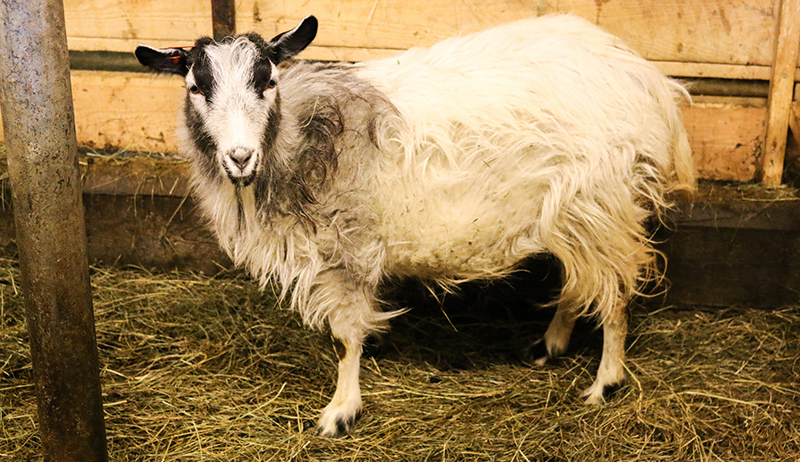
Q.
I’m starting my first goat herd, and I’m worried about parasites. Which common ones should I look for, and how can they be treated if I find them in or on my goats?
A.
It’s likely that one or more of your animals will contract a parasite at some point during its lifespan. There are, however, steps you can take to minimize the chance of this happening through proper and effective management. If you think your goat may be suffering from one of the following parasites, consult a veterinarian before beginning any treatment.
Internal Goat Parasites
Internal parasites, aka endoparasites, live inside a host animal at whose expense they obtain nutrition and shelter. Many can do a great deal of damage to a goat during the course of their life cycle, while others will peacefully coexist with the goat and cause relatively few health problems. The primary goal of effective parasite control is to interrupt those life cycles, and there are four major categories of endoparasites of concern to goat owners: gastrointestinal nematodes, aka roundworms; lungworms; tapeworms; and Coccidia.
These parasites are passed from one goat to another through consumption of the worm eggs or oocysts. These eggs can be found in persistently wet, soiled places where goats might be eating or grazing.
Causes
Goats become infected with internal parasites by eating worm eggs or protozoal parasites when feed is thrown on the ground or when the goats graze in an overly soiled pasture. The parasites are found in the goats’ feces, and the animals become ill after consuming them but continue their life cycle by passing the eggs out in their feces.
Symptoms
They include paleness around the eyes, weight loss, and loss of energy and appetite. The goat may exhibit diarrhea, coughing, a rough coat and reduced milk production. A Coccidia infection produces many of the same symptoms but can also be fatal if not treated.
Treatment
Treating internal parasites involves strategic and practical deworming. There is no one correct strategy for a parasite-control program: You must diagnose the specific problems in your herd and work with your veterinarian to create a program most appropriate for your goats. Take some representative fecal samples—one or two adults and one or two kids—to your vet for analysis. They’ll do a fecal egg count and help you create a treatment plan from there.
By knowing which parasites infect your herd, you can decide which dewormer to use and the frequency with which to use it. You should be aware, however, that fecal samples aren’t a perfect indicator of parasitic infestation. A fecal analysis looks for worm eggs or oocysts, and young worms don’t produce eggs and early infestations don’t show oocysts in the stool. A positive fecal can be of great assistance to your management program, but a negative sample must not be taken as evidence that the animal doesn’t have any internal parasites.
If you are planning on using milk or meat from your goats, be sure to observe the proper drug withdrawal times.
Prevention
Endoparasites can be prevented through proper herd management. Keep your goats’ feed and water free of plant and bedding debris and manure. Rotate goats to fresh pasture often to prevent them from consuming parasites. When you introduce new animals to your herd, isolate them for at least three weeks and deworm them before turning them out with your other goats. It’s also a good idea to keep bedding, feeders and water troughs very clean. Herds kept on dry lots may not have problems with internal parasites because these organisms thrive on moist, feces-rich areas. Pastures are ideal locations for these organisms to flourish.
External Goat Parasites
External parasites, aka exoparasites, live outside the host animal, usually on the skin or in the ears, at whose expense they obtain nutrition. Lice, mites and ticks are the major types of external parasites.
These parasites can move from one goat to another goat in the herd, especially if they share housing or bedding.
Causes
Lice, mites and ticks are more serious problems in the winter when the host animal has a thick undercoat and longer hair, or on fiber-producing breeds, such as Angora goats.
Symptoms
These parasites cause intense itching. In addition, ticks can also carry Lyme disease.
Treatment
Many infestations clear up in the spring as the animals shed their winter coats or when a fiber breed is sheared. A large part of the population of external parasites and their eggs are removed with the lost hair. The remaining parasites are more easily reached by other treatments. Many insecticides are available as a dip, spray or pour-on for livestock. Animals should be treated every two weeks for at least two to three treatments to break the life cycle of the external parasites.
Prevention
Other management practices, such as rotating pastures or spring cleaning of the bedding in the barn, will also help remove the environmental conditions in which both varieties of parasites thrive. Plan your spring cleaning and external parasite treatment for the same day to eliminate the greatest number of external parasites.
It’s helpful to keep health records for each of your goats to track vaccinations, medications and health history, especially notes on dewormers to avoid overusing one. This can help you to identify any recurring health problems and keep track of deworming and vaccination schedules.
Best of luck on your first year! Always provide your goats with shelter, clean water, food and bedding, and keep a level head and a keen eye: You’re going to love being a goat keeper!
This article was written Lorrie Boldrick, D.V.M., who is based in Orange, California, and vetted by Dr. Lyle G. McNeal. It ran in the January/February 2017 issue of Hobby Farms.




